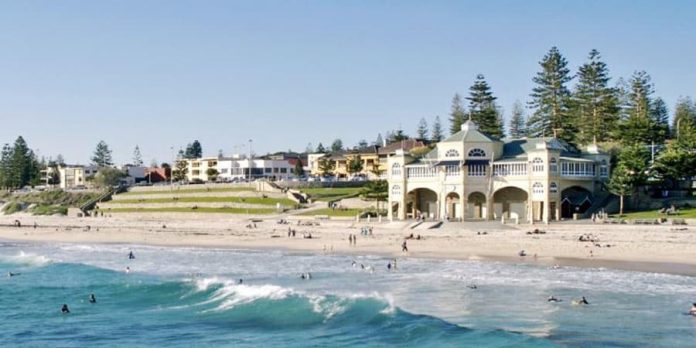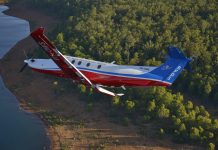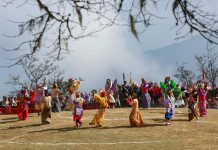Community-minded police sergeant W G Smith gathered a group together on Cottesloe Beach to begin revolutionary beach safety and lifesaving lessons in 1909.
Within weeks, Western Australia’s first surf patrols began, supported by boy scouts, just two years after Australia’s surf lifesaving movement originated in NSW.
WA’s first surf club, Cottesloe Surf Lifesaving and Athletics Club, was just part of the coast’s progress that has been tracked by the Grove Library that covers the towns of Cottesloe, Mosman Park and Peppermint Grove.
The area’s custodians are the Whadjuk people. Small steel triangles imbedded in footpaths mark the 17.4km Wardun Beelier Bidi trail, linking Noongar and heritage trails.
Quiet, conservative Cottesloe’s evolution from the 1890s was surprisingly progressive and busy.
From the 1890s, when land was first made available, fine houses and holiday establishments sprung up as people headed beachside on weekends and holidays.
In 1905, one of the State’s first coastal hotels sprang up for a future Perth lord mayor, Mr J. McPhee, who opened it as a guesthouse. The future Cottesloe Beach Hotel, to be remodelled over the decades, was still surrounded by sandhills when it was being built.
In 1907, a 116m-long wooden jetty, with rotunda and boat landing at the end, ran out into the sea from the end of Forrest Street.
Brass bands played on Sunday afternoons and public holidays.
“Passengers from the Zephyr pleasure steamer would disembark to listen to the music before heading off to Rottnest Island,” reports a Grove library booklet.
In 1909, Cottesloe Golf Club (now Seaview) became the first ‘links’ course and the third golf course in WA. A regular player was local resident and future Prime Minister John Curtin who was club patron from 1940 till his death in 1945.
In the early 20th Century, the Cottesloe Road Board planted 168 small Norfolk Island pines to improve the streetscapes. The young trees were fenced to protect them from freely-wandering horses, cows and goats.
After a 1925 fatal shark attack, plans for a shark-proof area eventuated, involving four pylons with a net suspended between them and secured at the shore.
But wild weather delayed the net’s installation. A concrete pylon was storm-damaged when parts of the installation were washed ashore, ending the project. One pylon remains, repaired over the decades and added to the State Heritage Register in 2003.
Cottesloe even obtained a lido cabaret and open-air picture gardens in 1935, greatly appreciated by guests of the next-door Hostel Manley (1913) who could watch films for free until a screen to stop them was erected.
In 1950, it became Lido Coffee Lounge where, on Sunday evenings for two shillings and sixpence, patrons would have coffee and toast while being entertained by orchestral music, vocalists, dancers and musicians.
The busy evolution included landmark Indiana Tea House from 1913 and there were several other temporary tearooms.
North Cottesloe Surf Lifesaving Club (1918) was the first surf club in Australia to own, develop and occupy its own land.
The Cottesloe beachfront had a bathing pavilion (with turnstile admission), open-roof tea garden, cafes, restaurant and kiosks from 1929.
Tukurua, a limestone mansion facing the sea, was built at the end of the 18th Century for WA’s first Attorney-General, Septimus Burt, before being converted to a grand guesthouse.
In 1897, Wearne Hostel was opened as a convalescent home, called the Ministering Children’s League Convalescent Home. Sold to the State Government in 1963, it became an annexe to Fremantle Hospital.
The Vlamingh Memorial commemorates the first-known European landing, of Willem Hessels de Vlamingh, in 1697. The Cable Station housed the start of the undersea cables that connected WA to the rest of the world from 1901.
And so we have Cottesloe today.






































